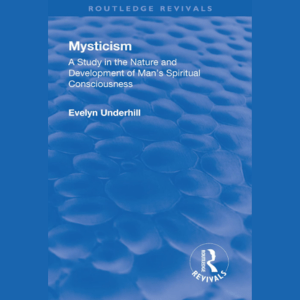Mysticism Book Review: Unveiling Evelyn Underhill’s Spiritual Insights

In the realm of spiritual literature, few works have had as profound an impact as Evelyn Underhill’s ‘Mysticism: A Study in the Nature and Development of Man’s Spiritual Consciousness’. Published in 1911, this seminal work has remained a cornerstone in the study of mysticism for over a century. This groundbreaking book delves into the profound realm of mysticism, offering a comprehensive exploration of this fascinating spiritual phenomenon.
Evelyn Underhill: A Brief Biography
Born in 1875, Evelyn Underhill was an English writer who, at the age of 29, experienced a mystical awakening that would shape the course of her life. Frustrated by the lack of guidance available to her, Underhill embarked on a quest to understand the nature of her experience, diving deep into the writings of mystics from various traditions.
The Genesis of the Book
Underhill, a prolific writer with a personal interest in mysticism, embarked on a remarkable journey after a life-changing mystical experience. Unable to find guidance from those around her, she turned to the vast wellspring of mystical writings, meticulously studying nearly a thousand sources. The culmination of her research was a 500-page book that continues to be a cornerstone for anyone seeking to understand the nature of spiritual awakening.
Part One: The Mystic Fact
Underhill begins by dispelling misconceptions, clearly differentiating mysticism from psychology, theology, magic, and occultism. She defines mysticism as the inherent human desire for complete harmony with a transcendent order, regardless of the specific religious framework. She invites readers to embark on a transformative journey, “a pathway to your Home,” where the “little door” within our spirit awaits, leading us to a higher reality. Underhill emphasizes the central role of love in the mystical experience, stating that “the business and method of Mysticism is Love.”
The Universal Phenomenon of Mysticism
One of the most striking aspects of Underhill’s work is its universality. While her primary focus lies in the writings of medieval European Catholic mystics, she also incorporates insights from Neo-Platonists, Protestants, and Sufis, including figures like Plotinus, Jacob Boehme, and Attar. This inclusive approach highlights the underlying unity of mystical experiences across cultures and traditions. Later in her career, Underhill even penned the introduction to Rabindranath Tagore’s translation of Kabir’s poems, further demonstrating her commitment to exploring the multifaceted nature of mysticism.
Part Two: The Mystic Way
The second part of the book delves into the stages of the typical mystical experience. Underhill outlines a five-fold path, guiding the reader through the progressive stages of awakening, purification, illumination, the dark night of the soul, and ultimately, the unitive life. Each stage represents a transformative journey towards spiritual enlightenment.
- Awakening of the Self: This initial stage marks the individual’s realization of a reality beyond the mundane. Underhill acknowledges that some may experience this awakening but not venture further.
- Purification of the Self: For those who press on, a period of self-examination and purification is necessary. Underhill cites St. Teresa of Avila and al-Ghazzali, emphasizing the importance of ridding oneself of desires and attachments to fully embrace the divine.
- Illumination of the Self: This stage is characterized by a profound inner light and a heightened sense of connection to the divine. Underhill draws upon the words of mystics like Jacopone da Todi, Mechthild of Magdeburg, and St. Teresa of Avila, who all vividly describe their experiences of illumination. This stage requires practices like introversion, recollection, and quiet contemplation, as exemplified by Meister Eckhart’s teachings.
- The Dark Night of the Soul: Not all mystics experience this stage, but for some, a period of intense spiritual desolation and doubt may arise. Underhill explains this through St. John of the Cross’ analogy of light blinding the unprepared eye. This suffering serves as a purification, preparing the soul for the final stage.
- Unitive Life: The culmination of the mystic’s journey is the unitive life, a state of complete union with the divine. Underhill describes this through the metaphors of a drop of water dissolving in wine (Henry Suso) and becoming one with God (Meister Eckhart).
Enduring Legacy
“Mysticism” remains a cornerstone for anyone seeking to understand the nature of spiritual awakening. Widely acclaimed by scholars and spiritual seekers alike, it has been lauded by figures like T.S. Eliot, Thomas Merton, and Aldous Huxley. Even a century after its publication, Underhill’s work is still used in university courses and continues to inspire those on the path of spiritual exploration.
Conclusion
Evelyn Underhill’s ‘Mysticism: A Study in the Nature and Development of Man’s Spiritual Consciousness’ remains a seminal work that offers profound insights into the nature of mysticism. Her rigorous scholarship, coupled with her deep spiritual insights, has ensured the enduring relevance of her work in the study of spiritual consciousness.
Whether you are a seasoned spiritual practitioner or simply curious about the human experience of transcendence, “Mysticism” offers a profound and insightful journey. Underhill’s clear and engaging writing style allows readers from all backgrounds to delve into the mysteries of the inner life and gain a deeper understanding of the potential for spiritual growth within each of us.
Frequently Asked Questions
- What inspired Evelyn Underhill to write ‘Mysticism: A Study in the Nature and Development of Man’s Spiritual Consciousness’?
Underhill’s personal mystical experience and her subsequent quest for understanding inspired her to delve into the study of mysticism.
- How did Underhill distinguish mysticism from other disciplines?
Underhill defined mysticism as the expression of the human spirit’s innate tendency towards harmony with the transcendental order, distinguishing it from psychology, theology, magic, and occultism.
- What are the five progressive stages of the mystic way according to Underhill?
The five stages are Awakening of the Self, Purification of the Self, Illumination of the Self, the Dark Night of the Soul, and the Unitive Life.
- Who were some of the leading thinkers influenced by Underhill’s work?
Leading thinkers influenced by Underhill’s work include Henri Bergson, T. S. Eliot, Thomas Merton, Alan Watts, and Charles Williams.
- Why is ‘Mysticism’ still relevant in contemporary spirituality?
Underhill’s insights into mysticism offer timeless wisdom that resonates with contemporary spiritual seekers, emphasizing the universal nature of the mystical experience.

